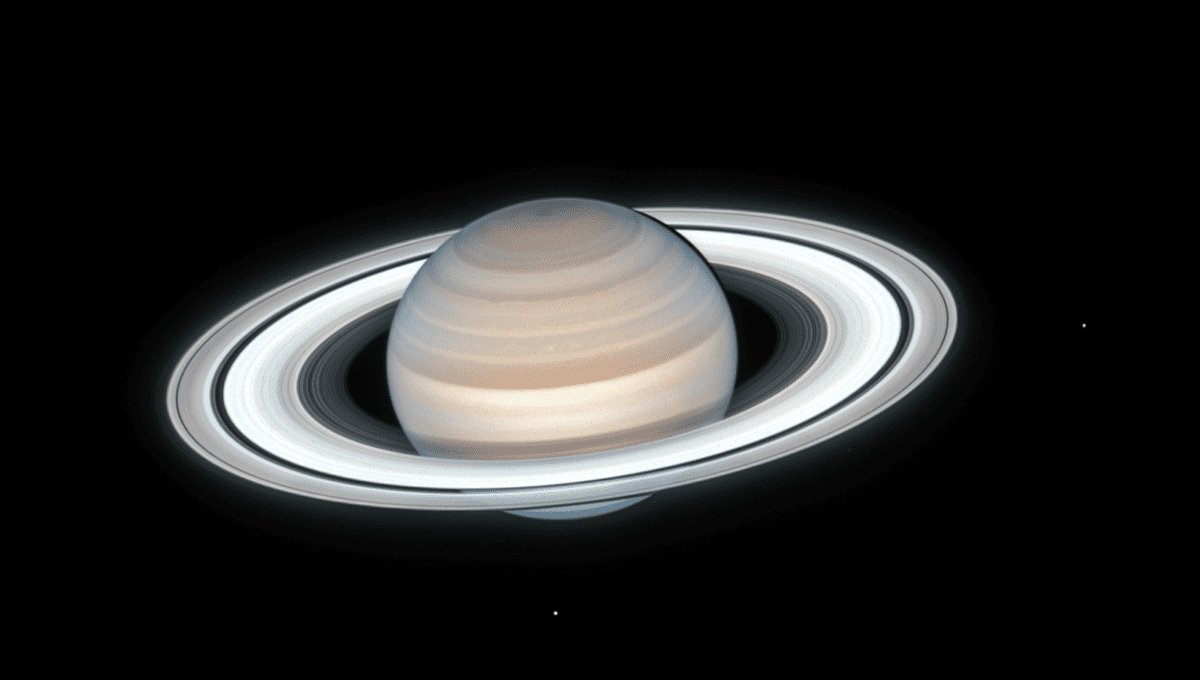
The origin of Saturn’s spectacular rings and its mysterious and peculiar connection to Neptune could have a single solution. Saturn used to have another moon that fell into the planet and some of its fragments went on to form the incredible rings that now adorn Saturn, a new study speculates. Scientists have decided to call this lost moon, Chrysalis.
Just like Earth, Saturn is tilted with respect to the plane of its orbit around the Sun. The angle between the two is 26.7 degrees and the direction where the axis points rotates at exactly the same rate as Neptune’s orbit precession. The coincidence was just too intriguing and researchers have long been trying to link the two worlds. Models show that the two planets are no longer interacting gravitationally, but they used to.
So what could have helped keep Saturn’s tilt in resonance with Neptune while pulling it away from its gravitational interaction?
A paper in Science argues that a missing moon – Chrysalis – would do just that. And that’s not all. The destruction of such an object could create a large set of rings, which could explain how the rings of Saturn formed so recently compared to the age of the planet.
“The tilt is too large to be a result of known formation processes in a protoplanetary disk or from later, large collisions,” lead author Jack Wisdom, professor of planetary sciences at MIT said in a statement seen by IFLScience. “A variety of explanations have been offered, but none is totally convincing. The cool thing is that the previously unexplained young age of the rings is naturally explained in our scenario.”
The scenario sees Chrysalis have a mass roughly that of Iapetus – the third largest moon of Saturn. About 150 million years ago, the authors suggest, Chrysalis got dangerously close to Saturn and was destroyed. Most of its remains rained on the planet below while some fragments broke apart in orbit, turning into rings.
“Just like a butterfly’s chrysalis, this satellite was long dormant and suddenly became active, and the rings emerged,” Wisdom explained in a statement.
Crucial to this work are the measurements of Saturn’s system by Cassini – a collaborative endeavor between NASA, the European Space Agency, and the Italian Space Agency. It took its final swan dive into Saturn five years ago today, after spending 13 years around the planet and its moons.
It measured the inertial motion of Saturn, which showed that the planet had once been in resonance with Neptune but it wasn’t any longer. It also discovered that Titan is moving away from Saturn but much faster than expected: 11 centimeters (4.3 inches) per year. This anomalous result could be explained if Titan was once in resonance with another moon, a moon that is no longer there.
“The rapid migration of Titan gives a new possibility for explaining the tilt of Saturn,” co-author Burkhard Militzer of the University of California at Berkeley, added. “The formula for the rate of precession of the spin axis depends on the presence of the satellites. So, the system could have escaped the resonance if Saturn used to have an additional satellite that was lost, changing the rate of precession enough to escape the resonance, but leaving the system close to the resonance.”
The hypothesis is certainly exciting but to be confirmed, more data about the motion of Neptune and Saturn will be necessary.
“It’s a pretty good story, but like any other result, it will have to be examined by others,” Wisdom said. “But it seems that this lost satellite was just a chrysalis, waiting to have its instability.”
The research was published in the journal Science.
Source Link: Destruction Of A Missing Moon May Have Formed The Rings Of Saturn